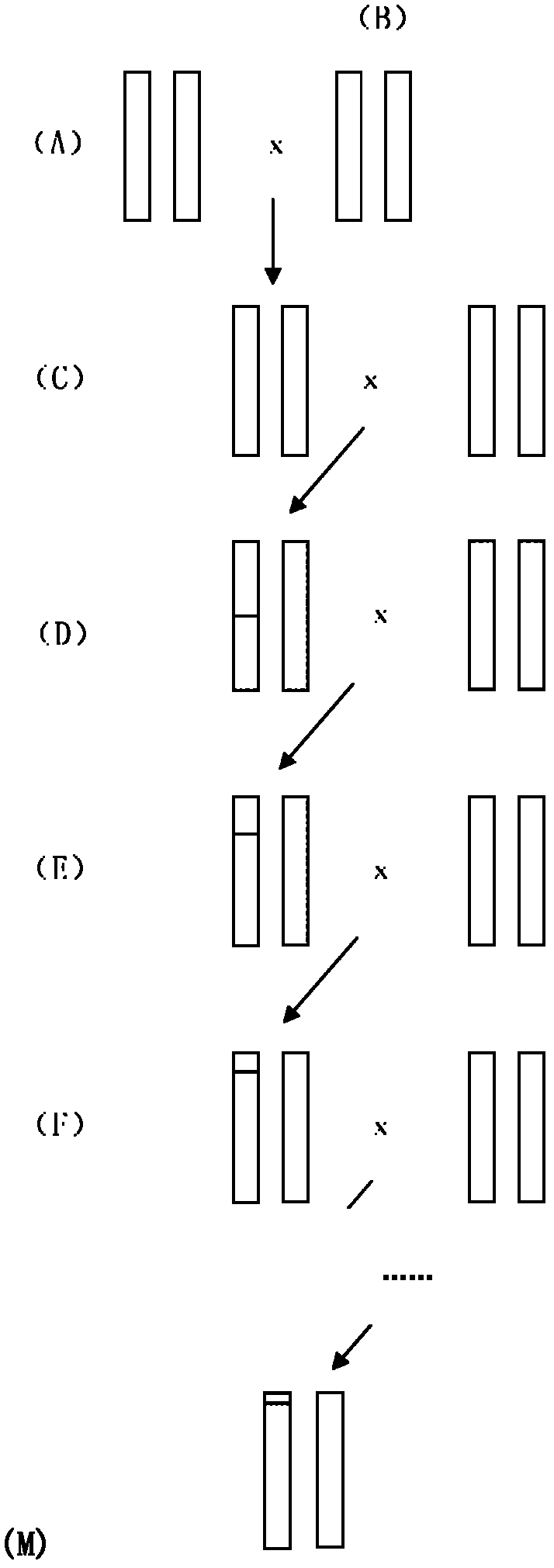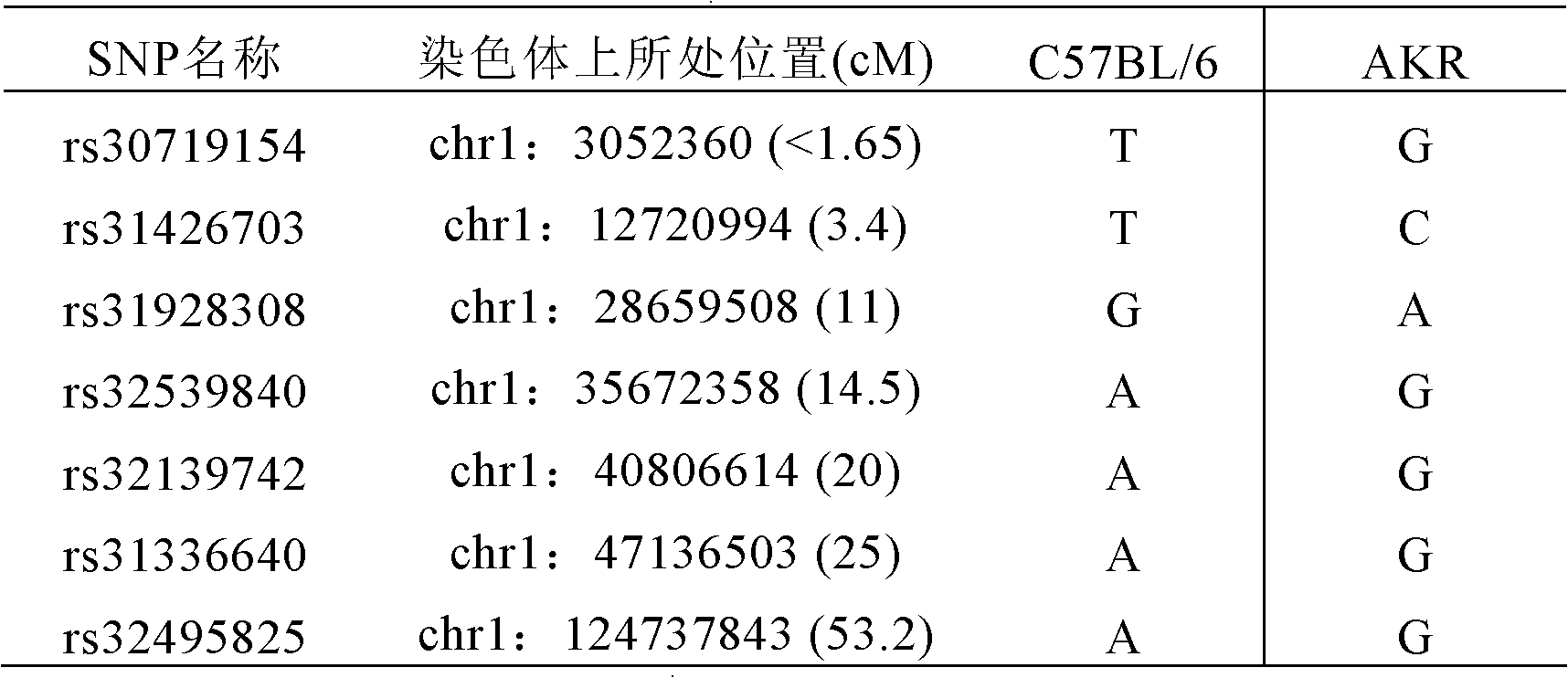Construction for number 1 chromosome substitution laboratory mouse strain C57BL/6-Chr1AKR
A technology of chromosome replacement and chromosome, applied in animal husbandry and other fields
- Summary
- Abstract
- Description
- Claims
- Application Information
AI Technical Summary
Problems solved by technology
Method used
Image
Examples
Embodiment 1
[0102] Embodiment 1, the construction method of chromosome replacement mouse
[0103] Adult mice of two strains of AKR and C57BL / 6 were taken, and AKR was used as the female parent, and C57BL / 6 was used as the male parent to cross each other to obtain the F1 generation.
[0104] C57BL / 6 was obtained by crossing F1 generation male mice with C57BL / 6 female mice 1 -Chr1 AKR , for backcross generation, in C57BL / 6 1 -Chr1 AKR In male mice, the sex chromosomes and mitochondrial DNA in AKR have been replaced with C57BL / 6; F2 generation male mice were crossed with C57BL / 6 female mice to obtain C57BL / 6 2 -Chr1 AKR , in this way, ten generations of recurrent crosses were obtained, and ten generations of backcrossed mice C57BL / 6 were obtained. 10 -Chr1 AKR , the schematic diagram of the construction process is as follows figure 1 .
Embodiment 2、1
[0105] Example 2, No. 1 chromosome genome identification
[0106] (1) Primary Screening and Identification of Chromosome 1 Genome
[0107] Compare the gene sequences of chromosome 1 of the two strains of AKR and C57BL / 6 (refer to the public information of MGI (http: / / www.informatics.jax.org / ) for the sequence), and select the representative two strains Different SNP sites, these SNP sites are evenly distributed on chromosome 1, and are easy to design and operate. Then design primers for these SNP sites to amplify sequences with characteristic SNP sites, and design the range of PCR amplified fragments between 100 and 400 bp. Primer design is mainly based on primer3 online software (http: / / frodo.wi .mit.edu / primer3 / ) and the Oligo6.0 program (Molecular Biology Insights Inc., USA) were completed. Site-specific probes and general probes were designed for these SNP sites for LDR, and the length of LDR probe ligation products was 80-130 bp.
[0108] The 13 SNP sites on the chromo...
PUM
 Login to View More
Login to View More Abstract
Description
Claims
Application Information
 Login to View More
Login to View More - R&D Engineer
- R&D Manager
- IP Professional
- Industry Leading Data Capabilities
- Powerful AI technology
- Patent DNA Extraction
Browse by: Latest US Patents, China's latest patents, Technical Efficacy Thesaurus, Application Domain, Technology Topic, Popular Technical Reports.
© 2024 PatSnap. All rights reserved.Legal|Privacy policy|Modern Slavery Act Transparency Statement|Sitemap|About US| Contact US: help@patsnap.com










